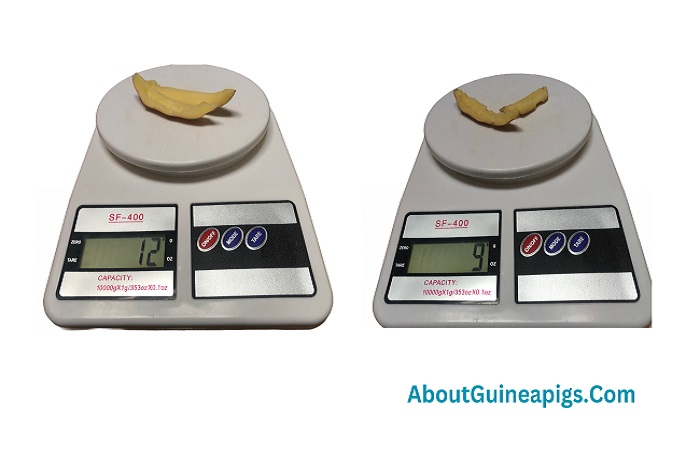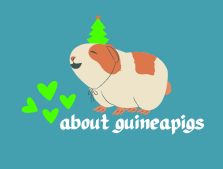Today, I will share the results of another experiment I did with my guinea pigs, Max & Maya. Yes, I like to share the findings on can guinea pigs eat potato peels. This experiment was held by me and my loving guinea pig. You will likely get your preferred answer from this article.
Well, I offered 12 grams of potato peels to my guinea pig, Max & Maya, and they consumed a total of 3 grams of potato peels, and 9 grams of potato peels were uneaten. That means they both finished in total 25% potato peels. I recorded a video while they were eating. You are invited to watch the video at last of this article.
With their small size and unique dietary requirements, Guinea pigs require careful consideration when it comes to their food choices. While guinea pigs are known for their love of fresh vegetables and fruits, it is essential to investigate whether certain food items, such as potato peels, are suitable for their consumption.
This article presents the findings of an experiment conducted to determine if guinea pigs can safely consume potato peels. The investigation includes a description of the procedure, the results obtained, a discussion of the implications, and recommendations for guinea pig owners.
Contents
Can Guinea Pigs Eat Potato Peels: The Experiment, Results, Discussion, and Our Recommendation
The Experiment:
The experiment involved offering 12 grams of potato peels to two guinea pigs named Max and Maya. The potato peels were thoroughly washed to remove any dirt or residual pesticides before being provided to the guinea pigs.
After allowing them access to the potato peels for a set period, the remaining uneaten peels were weighed to accurately determine the amount consumed by the guinea pigs.
Careful observation was maintained throughout the experiment to monitor any signs of distress or discomfort in the guinea pigs.
Results:
After the allotted time, it was found that Max and Maya consumed 3 grams of potato peels, while 9 grams of potato peels remained uneaten.

Based on these results, the guinea pigs consumed approximately 25% of the provided potato peels.
Potato Peels Consumed Report:
|
Descriptions |
Amounts To Eat (Max & Maya) |
|
Was Given To Eat |
12 Grams |
|
They Ate |
3 Grams |
|
Percent Ate |
25% |
|
Remains |
9 Grams |
Discussion:
The findings from this experiment raise essential considerations about the suitability of potato peels as a dietary choice for guinea pigs.
While guinea pigs are herbivores and can consume a wide range of plant-based foods, evaluating the specific nutritional content and potential risks associated with potato peels is crucial.
Potato peels contain a compound called solanine, a toxic substance found in certain parts of the potato plant. The concentration of solanine is typically higher in the peel than the potato’s flesh.
Guinea pigs have a sensitive digestive system and may not be able to tolerate solanine in significant amounts.
In this experiment, the fact that Max and Maya consumed only 25% of the potato peels suggests a potential aversion to this food item.
It is possible that the guinea pigs detected the presence of solanine, making them reluctant to consume more of the peels.
Additionally, the high fiber content and rugged texture of potato peels may also contribute to their limited consumption. Here is the video, you can check this:
Our Recommendation:
Based on the results of this experiment and considering the potential risks associated with potato peels, it is advisable to exercise caution when feeding potato peels to guinea pigs.
While small amounts of potato peel consumption may not pose an immediate threat, it is best to prioritize other safe and nutritious food options for guinea pigs.
Guinea pigs thrive on a diet of fresh hay, high-quality guinea pig pellets, and various fresh vegetables and fruits.
It is essential to provide a balanced diet that fulfills their nutritional requirements, such as vitamin C, which is necessary for guinea pigs as they cannot produce it themselves.
Are Potatoes Toxic to Guinea Pigs?
Potatoes, specifically the parts of the potato plant other than the flesh, contain certain compounds that can be toxic to guinea pigs.
While the meat of potatoes is generally safe for guinea pig consumption in moderation, other parts, such as the peels, sprouts, and green parts of the plant, should be avoided. Here are some essential details about the potential toxicity of potatoes to guinea pigs:
Solanine
Potatoes belong to the nightshade family of plants, and they naturally produce a toxic compound called solanine. Solanine is a natural defence mechanism for the plant, protecting it from pests and predators.
The concentration of solanine is highest in the green parts of the potato plant, such as the leaves, stems, and sprouts. Potato peels also contain higher levels of solanine compared to the flesh.
Toxic Effects
When ingested in large amounts, solanine can cause various health issues in guinea pigs.
Symptoms of solanine poisoning may include gastrointestinal upset (such as vomiting and diarrhoea), excessive drooling, decreased appetite, abdominal pain, lethargy, and even neurological symptoms in severe cases.
Guinea pigs have a relatively low solanine tolerance compared to others.
Potato Peels
While potato peels are not recommended as a regular part of a guinea pig’s diet due to the higher solanine content, some guinea pigs may tolerate small amounts of well-washed and cooked potato peels.
However, monitoring your guinea pig closely for any signs of discomfort or adverse reactions when introducing potato peels is essential.
Green Potatoes
Green discoloration on potatoe’s skin indicates chlorophyll, which suggests that the potato has been exposed to light and has potentially higher levels of solanine.
Green potatoes, whether cooked or raw, should be avoided entirely as they can contain dangerous levels of solanine.
Sprouted Potatoes
When potatoes start to grow, the sprouts contain higher levels of solanine. It is crucial to remove any nodes before feeding potatoes to guinea pigs. Discard any potatoes that have extensive sprouting.
Generally, it is best to offer guinea pigs a diet consisting of fresh hay, high-quality guinea pig pellets, and various guinea pig-safe vegetables and fruits.
These provide essential nutrients, including vitamin C, which is crucial for guinea pigs as they cannot synthesize it independently. Always consult with a veterinarian to ensure you provide a safe and balanced diet for your guinea pig.
Do Guinea Pigs Eat Potato Peels?
Guinea pigs can eat small amounts of potato peels, but it is not recommended to include them in their diet.
Potato peels contain higher concentrations of solanine, a toxic compound that can harm guinea pigs if consumed in large quantities.
While some guinea pigs may tolerate small amounts of well-washed and cooked potato peels, monitoring them closely for any signs of discomfort or adverse reactions is essential.
It’s important to note that the potato’s flesh is generally safer for guinea pigs to consume compared to the plant’s peels, sprouts, or green parts.
However, potatoes should still be given in moderation due to their high starch content, which can contribute to digestive issues and weight gain in guinea pigs.
It is recommended to prioritize other safe and nutritious food options for guinea pigs, such as fresh hay, high-quality guinea pig pellets, and various guinea pig-safe vegetables and fruits.
These foods provide vitamin C and other essential nutrients. This is crucial for guinea pigs as they cannot synthesize it independently. Always consult a veterinarian to ensure you provide a balanced diet for your guinea pig’s specific needs.
By the way, you have to know the real life experiment of can guinea pigs eat raw potato, red potatoes and others. If you are interested then you can read those articles. I explained a lot of information there with helpful videos.
Frequently Asked Questions
Q: What is the peel of a potato?
A: The peel of a potato refers to the outermost layer of the potato, which is a thin, protective skin that covers the flesh. It is usually brownish or yellowish in color and can vary in texture from smooth to slightly rough.
The peel acts as a natural barrier, shielding the potato from external elements and helping to retain moisture within the potato.
While the flesh of the potato is the main edible part, the peel is often removed before cooking or eating, although it can also be consumed in some cases.
Q: Can pigs eat potato peels?
A: Pigs can eat potato peels in moderation, as they have a digestive system that is more tolerant of certain substances found in potato peels, such as solanine.
However, it is important to note that potato peels should not make up a significant portion of a pig’s diet. Pigs have specific dietary requirements, and their main source of nutrition should come from a balanced diet formulated for their needs.
It is always recommended to consult with a veterinarian or animal nutritionist for guidance on proper pig nutrition and feeding practices.
Q: Can guinea pigs eat raw potato peel?
A: No, it is not recommended to feed guinea pigs raw potato peels. Raw potato peels contain higher concentrations of solanine, a toxic compound that can be harmful to guinea pigs if consumed in large amounts.
Guinea pigs have sensitive digestive systems, and raw potato peels can cause digestive upset and other health issues. They also eat potato chips.
It is best to avoid feeding guinea pigs raw potato peels and instead focus on providing them with a balanced diet consisting of fresh hay, high-quality guinea pig pellets, and guinea pig-safe vegetables and fruits.
My Final Opinion
The experiment evaluating guinea pigs’ consumption of potato peels suggests that caution should be exercised when offering this food item.
The limited consumption by Max and Maya, potentially due to the presence of solanine and the rugged texture, indicates that there may be better choices than potato peels for guinea pig diets.
To ensure the well-being of guinea pigs, it is recommended to provide a balanced diet consisting of guinea pig pellets, fresh hay, and various guinea pig-safe vegetables and fruits.
Useful Links: About Potato Peels, Benefits of Potato Peels.
- Guinea Pig Names That Start with O – Unleash The Creativity - August 7, 2023
- Guinea Pig Names That Start With N – Popular & Nice Names - August 7, 2023
- Guinea Pig Names That Start With M – Good Unisex Names - August 7, 2023

